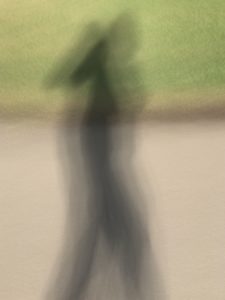In a recent newsletter, I said that I enjoy books that make me see something familiar in a whole new way. David Abram’s book, Becoming Animal: An Earthly Cosmology, did just that in many ways. I’ll share two in particular over the next couple of posts, the first being on shadows.
I’ve been slightly obsessed with light and shadows for my entire photographic life. After all, photography is all about writing with light. In my classes, I often advise spending a week just watching how light and shadow are constantly moving and changing, painting our surroundings in new and surprising ways. It’s not just an exercise in mindfulness, it can heighten your mood and help you see more in general.
Light and shadow go together like yin and yang. You can’t find one without the other. From a scientific point of view, shadows are blocked light. And, almost all shadows contain varying degrees of light. And vice versa. From a psychological standpoint, Jung referred to the shadow as the unknown side of ourselves. It’s always there and our job is to get to know it, not to fear or banish it.
I’ve explored light and shadows from scientific, psychological, and photographic perspectives. Yet, Abram helped me see shadows in particular in a whole new way. He says that a common misperception, possibly because this is the way our eyes experience them, is that shadows are flat.

“The actual shadow does not reside primarily on the ground; it is a voluminous being of thickness and depth, a mostly unseen presence that dwells in the air between my body and that ground. The dusky shape on the asphalt touches me only at my feet, but that is merely the outermost edge of a thick volume of shade, extending from the pavement and touching every point of my person.”
Abram suggests not just seeing shadows but feeling their effects; for example, how your shadowed side is cooler than your other side. Notice how a bird or a butterfly dims as it passes through a shadow or how a hill in shadow changes colour. Think of night as the “shadow of earth, the shadow that eats all other shadows.”
“Whenever we touch any entity, we are also ourselves being touched by that entity. Every gust of wind, every note ringing forth from the bell tower, each staccato step of a water strider along the stream’s surface, has its own subtle influence upon the beings around it.”
Sometimes we forget that we don’t just live on the earth, but in it. Our planet includes the air surrounding and penetrating us, a mostly unconscious exchange of inhalation and exhalation. This reciprocity, this relational way of seeing and experiencing, is the very structure of perception. While we can choose how we move through the world, we live in a constant state of vulnerability. We are always touched by the world around us. Abram believes that we hold ourselves apart from the world in order to subdue its wildness.
What if we embraced our own wildness instead? Our own shadows too. This is becoming animal.
While I’ve presented just one idea from the book, Becoming Animal, there is much more. It is about re-connecting with the world around us and especially the other species and creatures with which we share this planet. Abram weaves in beautiful, personal and descriptive writing that show just the kind of connection with other species that he’s recommending. I really enjoy his writing and provocative thinking.
** Books mentioned have Amazon affiliate links, meaning I make a few cents if you purchase through my link. I only recommend books that I’ve read.